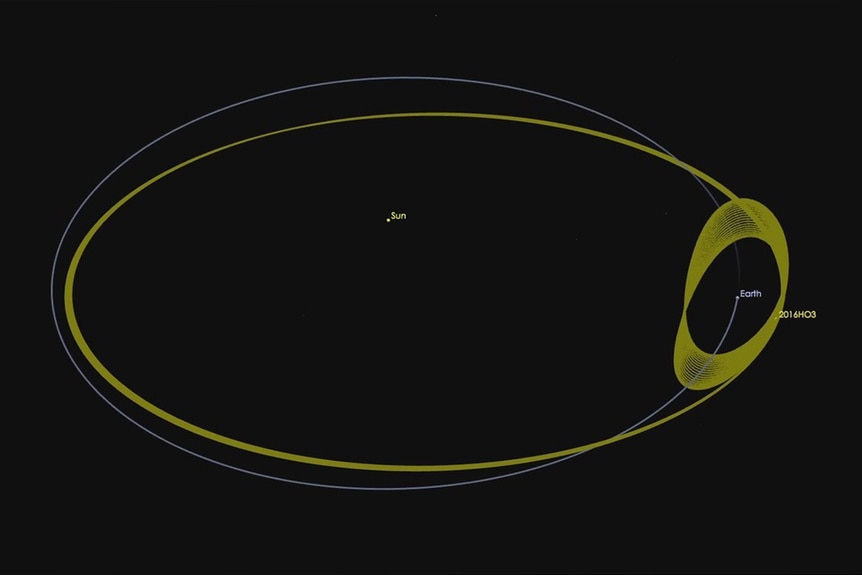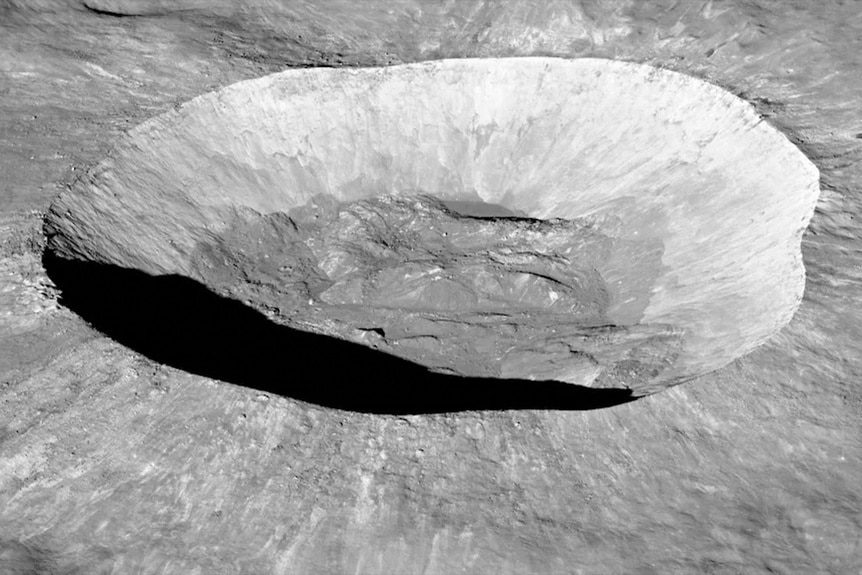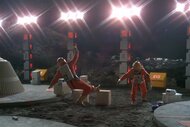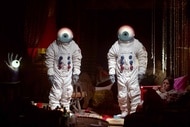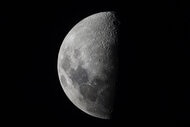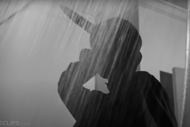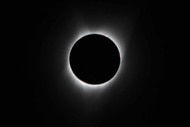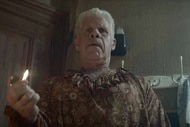Create a free profile to get unlimited access to exclusive videos, sweepstakes, and more!
Earth's Quasi-Moon Kamo'oalewa Might be Literal Offspring from the Moon
A new study suggests quasi-moon Kamo'oalewa is a chunk blasted from the Moon millions of years ago.

With space rocks, as with children, sometimes the apple doesn’t fall far from the tree. In the 2021 disaster flick Asteroid, one family attempts to break the cycle of repetition by giving up their big city lives for a quieter existence in a small town. The trip is supposed to be life changing and it is, just not in the ways they expected. Instead of the quiet provincial life they’re seeking, they find themselves directly in the path of an oncoming asteroid.
We’re so obsessed with the admittedly slim possibility of a deadly asteroid impact on Earth that we rarely stop to consider the violent collisions that happen elsewhere. A quick glance at the Moon’s face reveals a long history of violent attacks going back billions of years and one of them might have given the Moon a child, a literal chip off the old block.
The near-Earth asteroid Kamo'oalewa, otherwise known as 2016 HO3, was first spotted April 27, 2016, by the Pan-STARRS 1 asteroid survey telescope on Haleakala, Hawaii. It has an estimated length of between 130 and 330 feet (40 and 100 meters) and it may have originated from the Giordano Bruno crater on the far side of the Moon, according to a new study published in the journal Nature Astronomy.
Earth’s Quasi-Moon Kamo'oalewa Might be a Chunk of the Moon
Kamo'oalewa orbits the Sun, but its orbit takes it on a circuitous path that loops around the Earth throughout the year. That curious orbital cocktail earns Kamo'oalewa the status of a quasi-moon; it isn’t a true satellite but it behaves kind of like one. Half the time, Kamo'oalewa is leading the Earth and half the time it’s trailing behind. Its orbital inclination also causes it to dip below and rise above the Earth’s orbital plane at intervals like a dolphin jumping in and out of the water.
For More on the Moon:
Space Station Crew Captures Stunning View of the Eclipse from Space
What Are the Moon Phases and How Do They Work?
NASA Proposes Moon Standard Time with Slightly Shorter Seconds
To identify the origin of our tiny quasi-moon, researchers started by modeling the sorts of impacts that could create Kamo'oalewa-sized shrapnel. Then they looked for actual craters on the Moon with the characteristics they needed and found Giordano Bruno crater. Next, they matched the reflectance spectra of Kamo'oalewa with that of the crater, to confirm that they are likely made of the same stuff.
The complicated gravitational dance keeps Kamo'oalewa tethered to the Earth at distances between 38 and 100 times the average distance to the Moon, and it’ll stay there for a while yet. "Our calculations indicate 2016 HO3 has been a stable quasi-satellite of Earth for almost a century, and it will continue to follow this pattern as Earth's companion for centuries to come,” said Paul Chodas, manager of NASA's Center for Near-Earth Object (NEO) Studies, in a statement.
Most NEOs (of which there are hundreds of thousands known) come from the asteroid belt but the new study suggests Kamo'oalewa came from closer to home. Scientists suggest it was created when an asteroid about a mile (1.6 kilometers) across smashed into the far side of the Moon. That impact carved out a new crater 13.6 miles (22 kilometers) across, called Giordano Bruno and kicked tons of Moon rocks out into space. Some of them would have kept on flying out into deep space, some of them would have fallen back to the surface, and at least one of them found a nice comfy place to hang out nearby.
China’s Tianwen-2 mission, slated for launch in 2025, is set to learn even more about Kamo'oalewa. After catching up with the Moon Jr. it will dip down for a visit, grab hold of a sample, and return it to Earth a couple of years later. Once back on Earth, scientists will be able to perform a lunar paternity test by comparing bits of Kamo'oalewa with samples from the Moon. Sure, asteroid impacts are destructive, but how else is a Moon supposed to have a kid?
Watch Asteroid, streaming now on Peacock!
